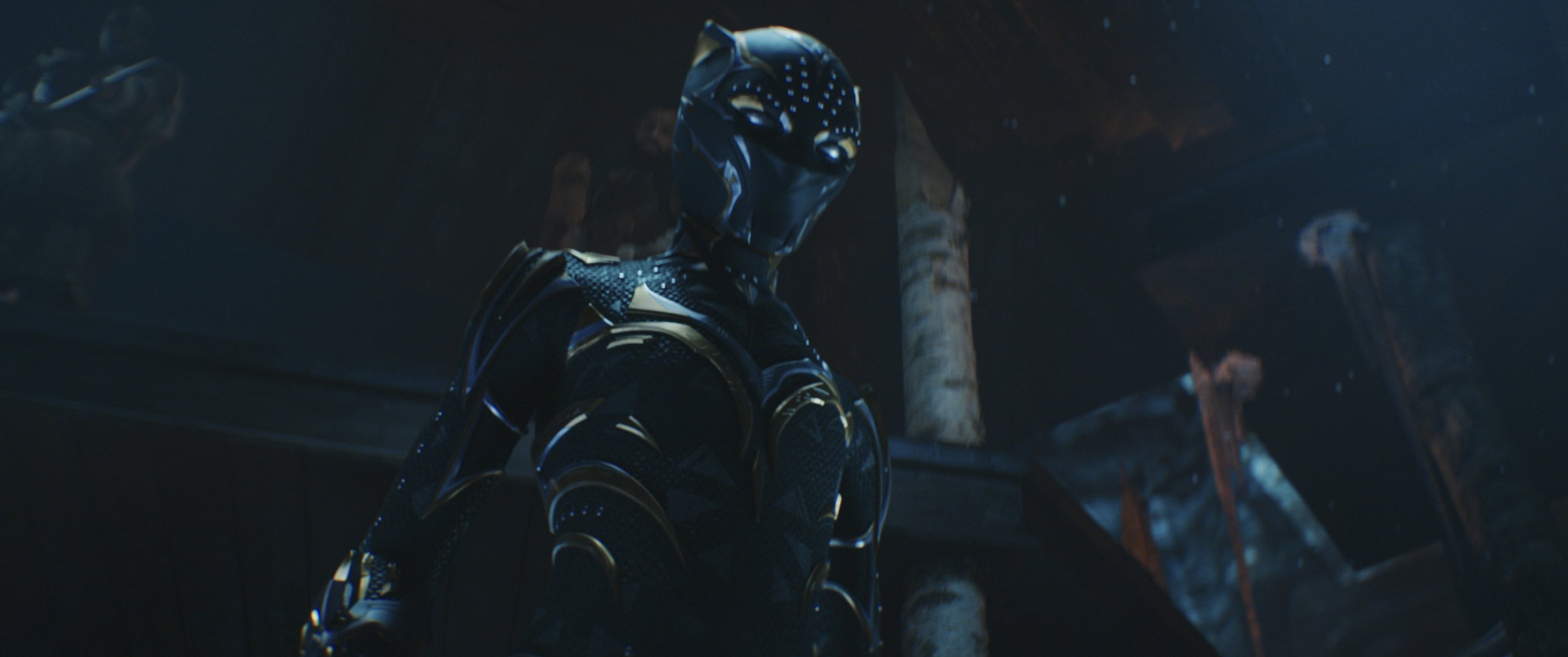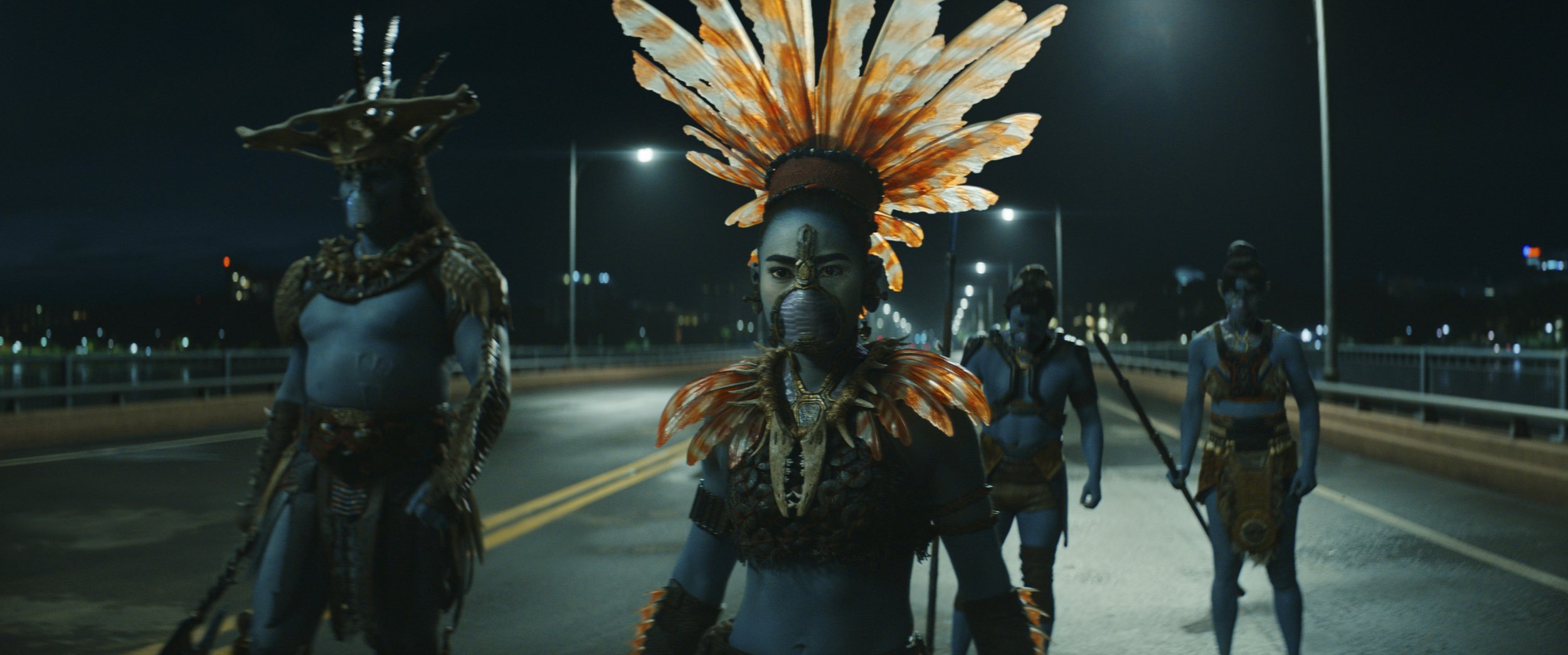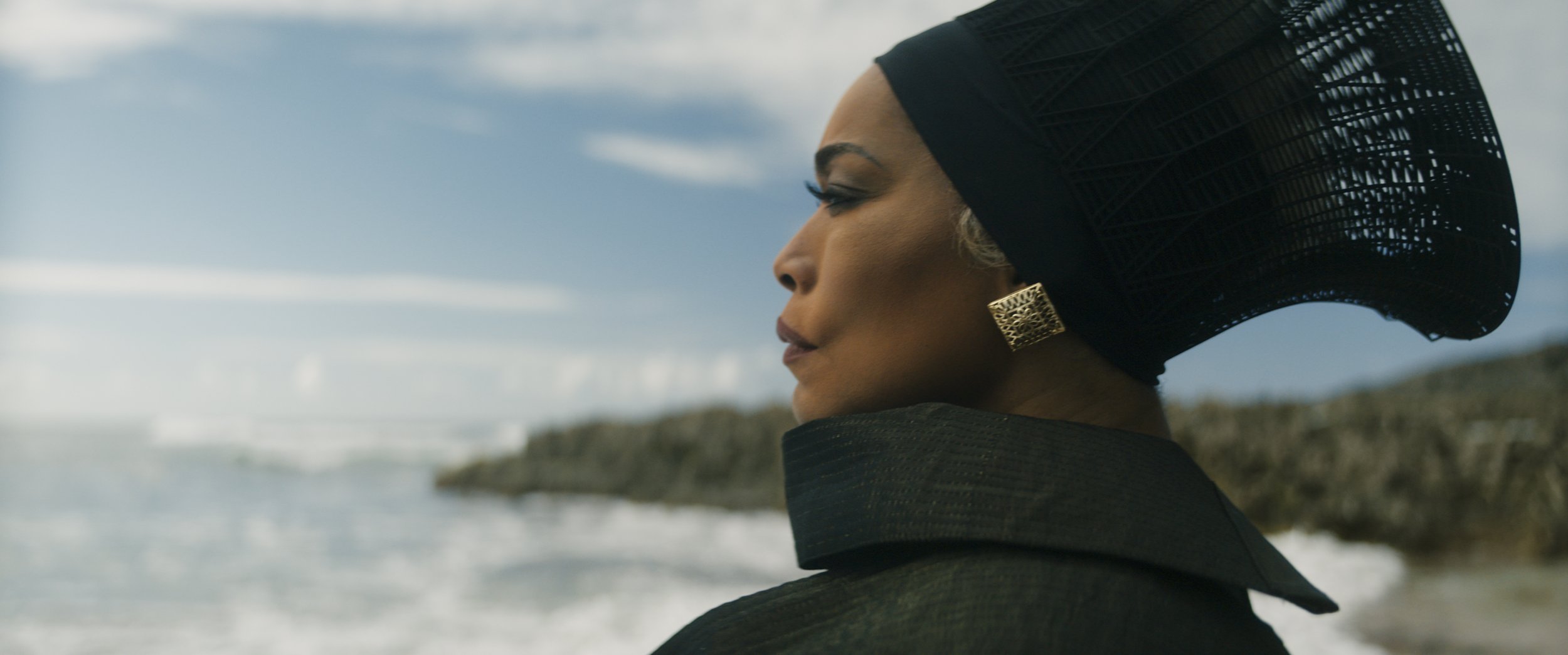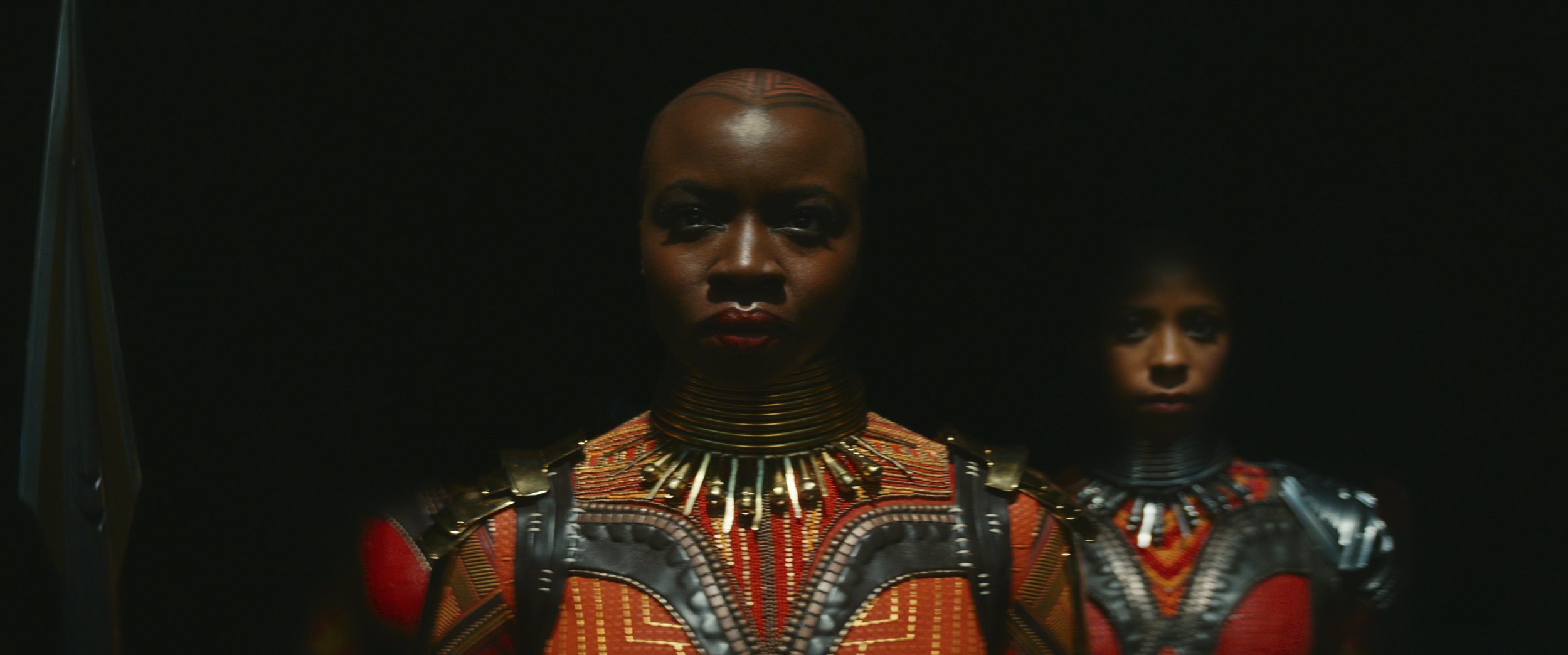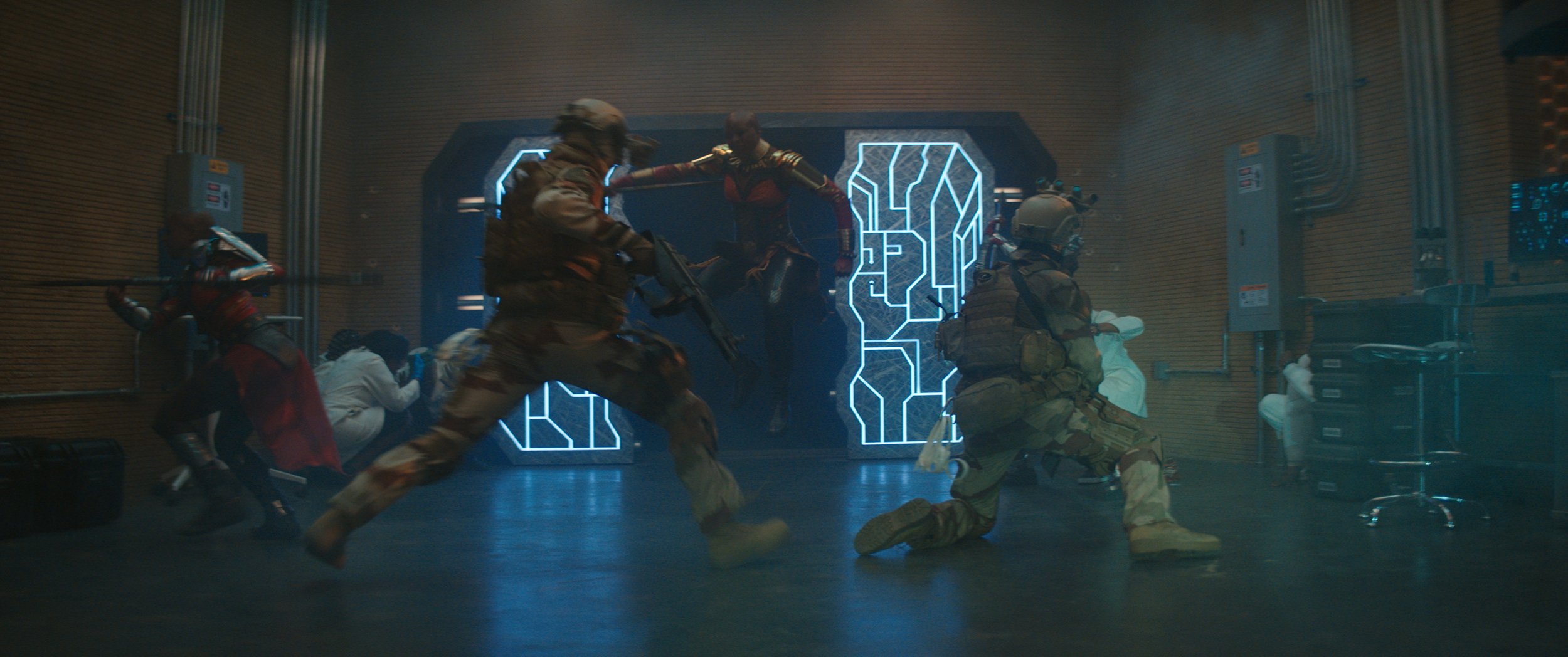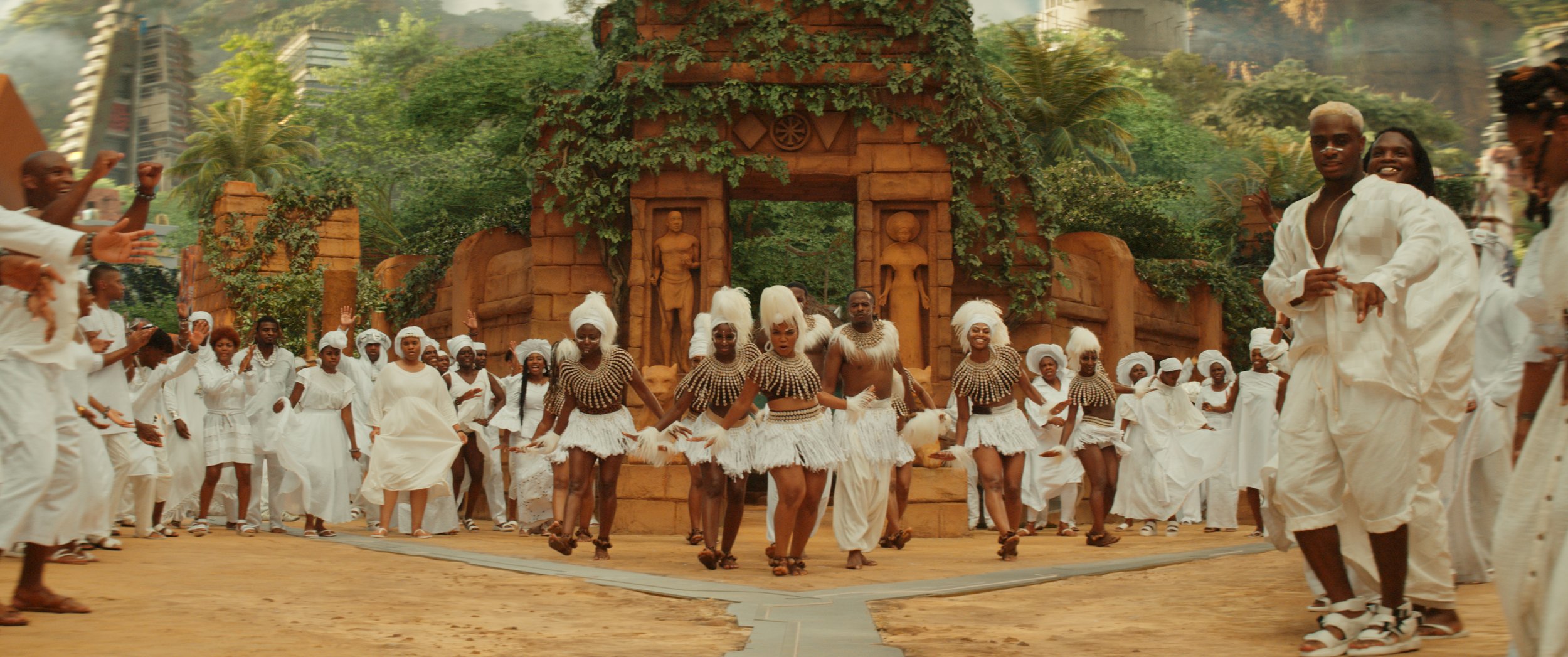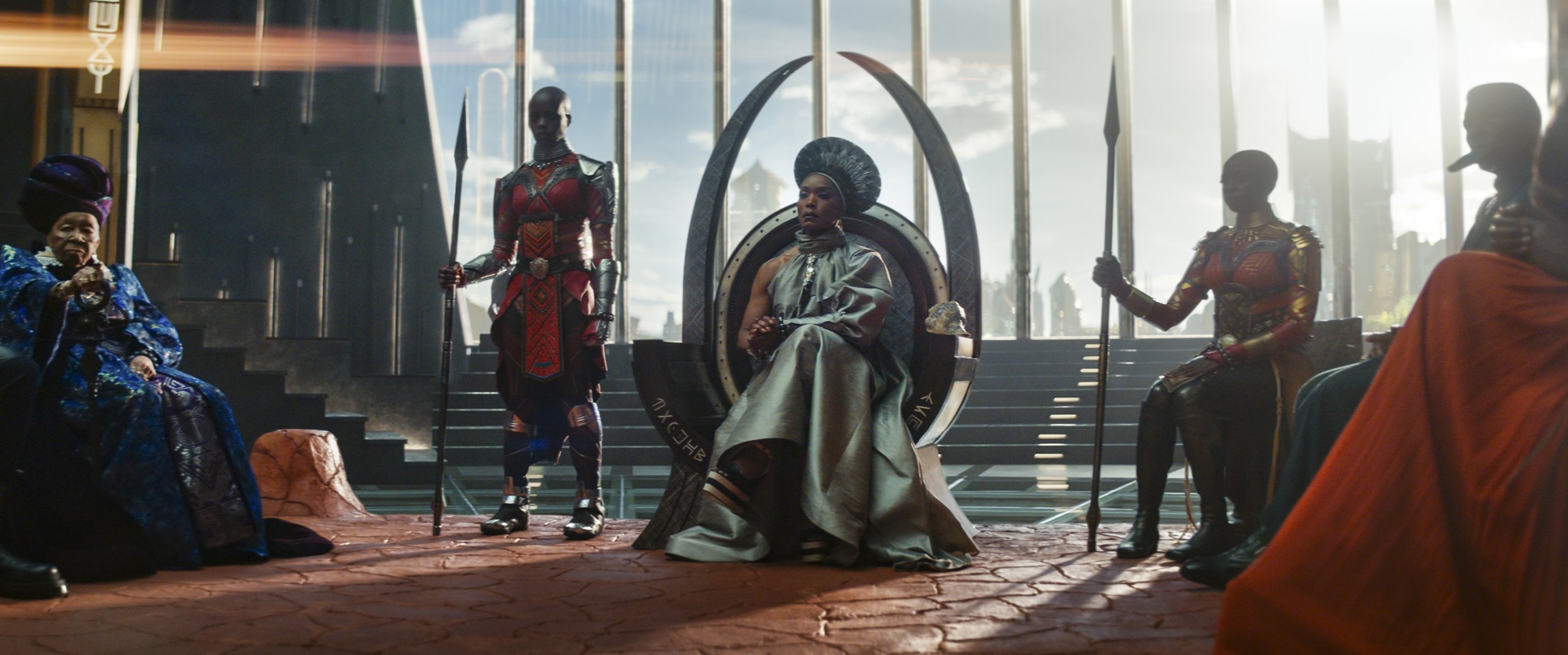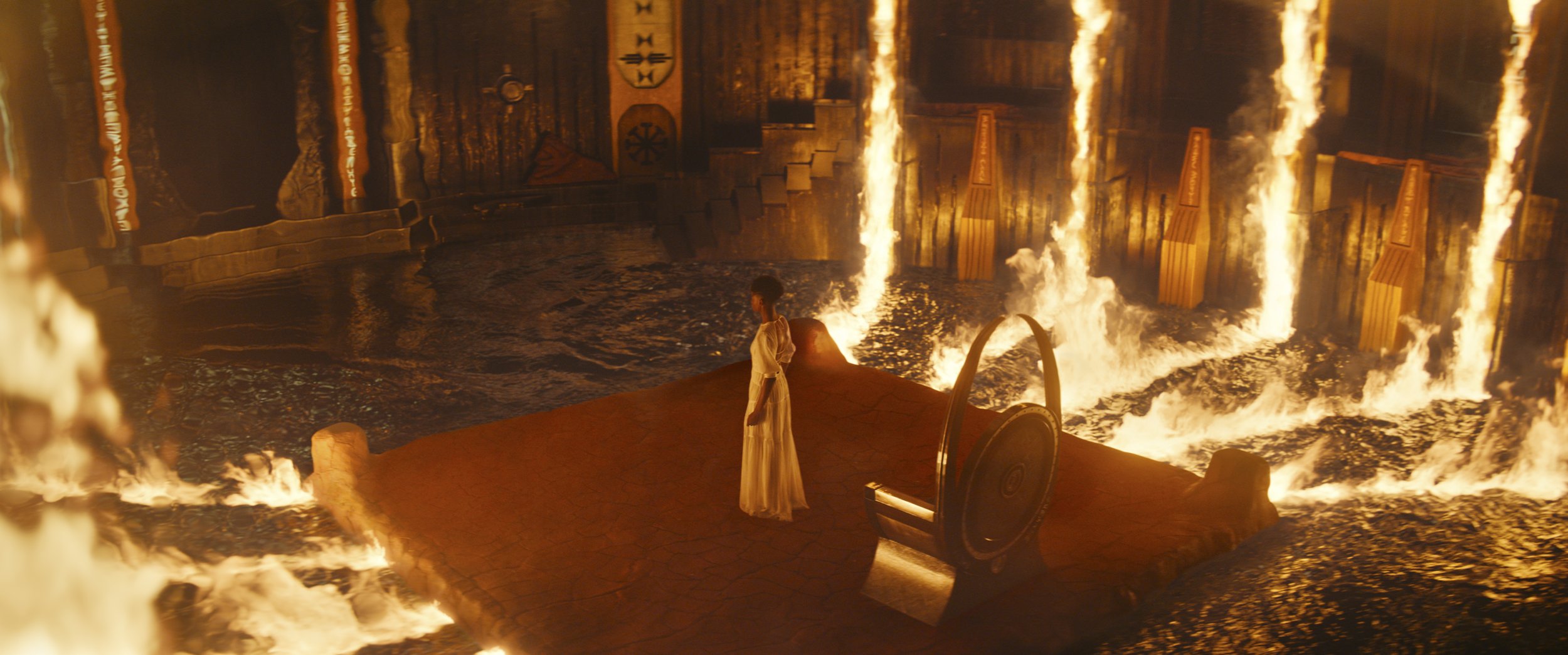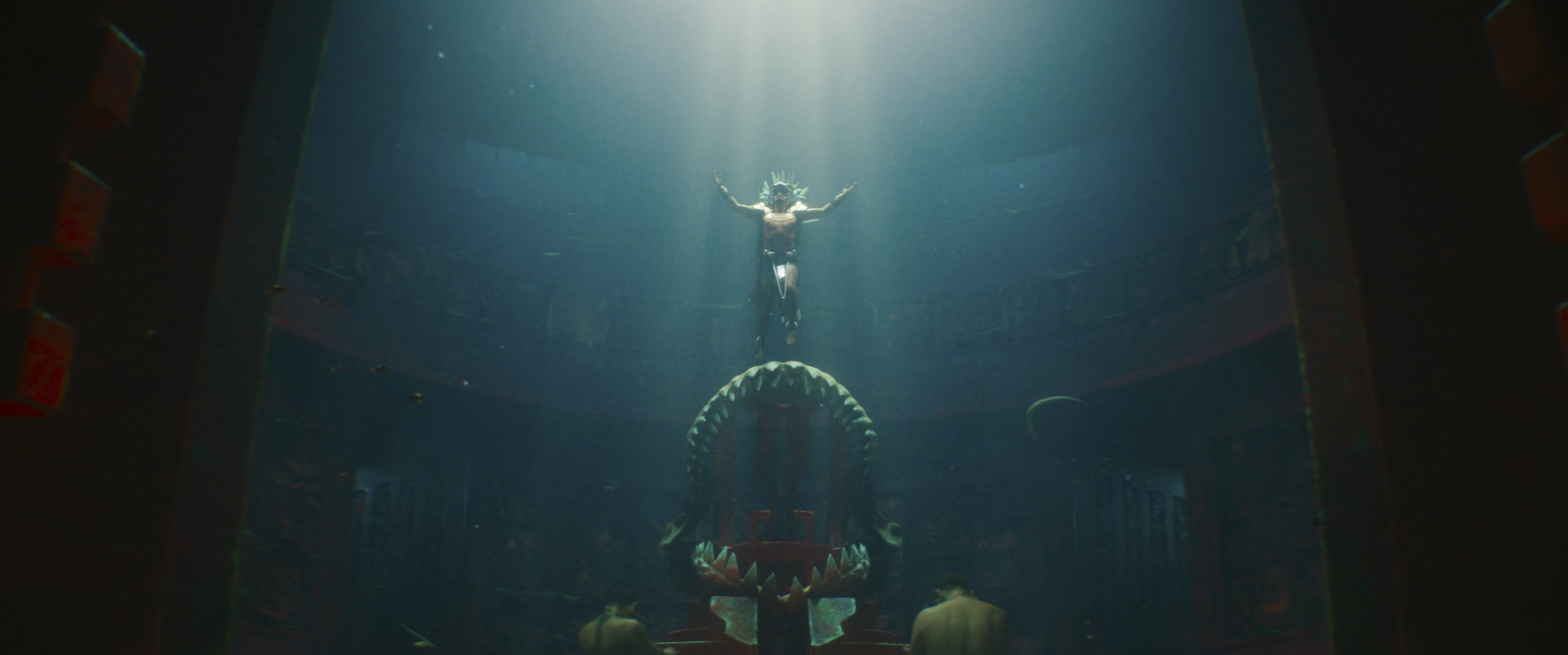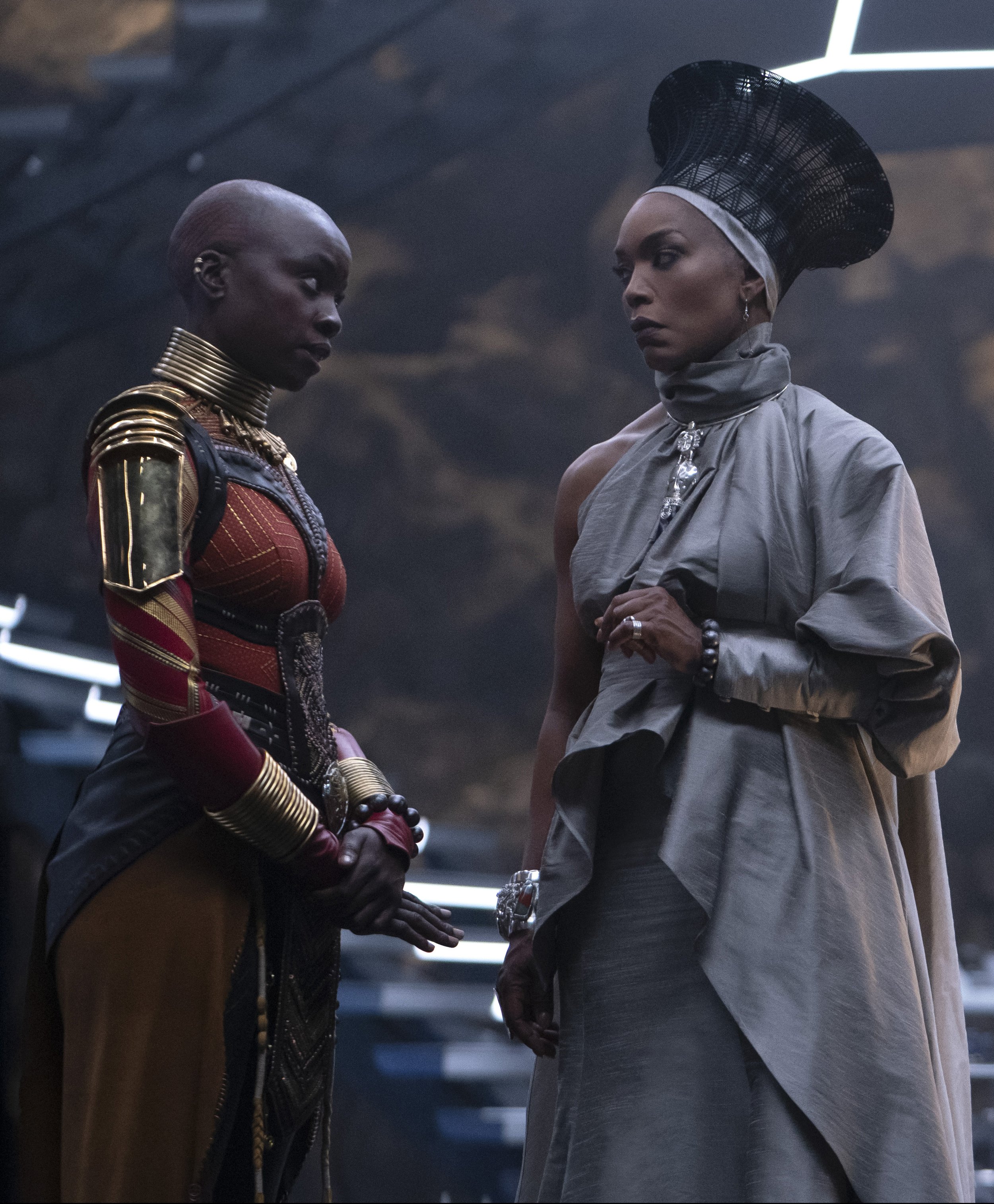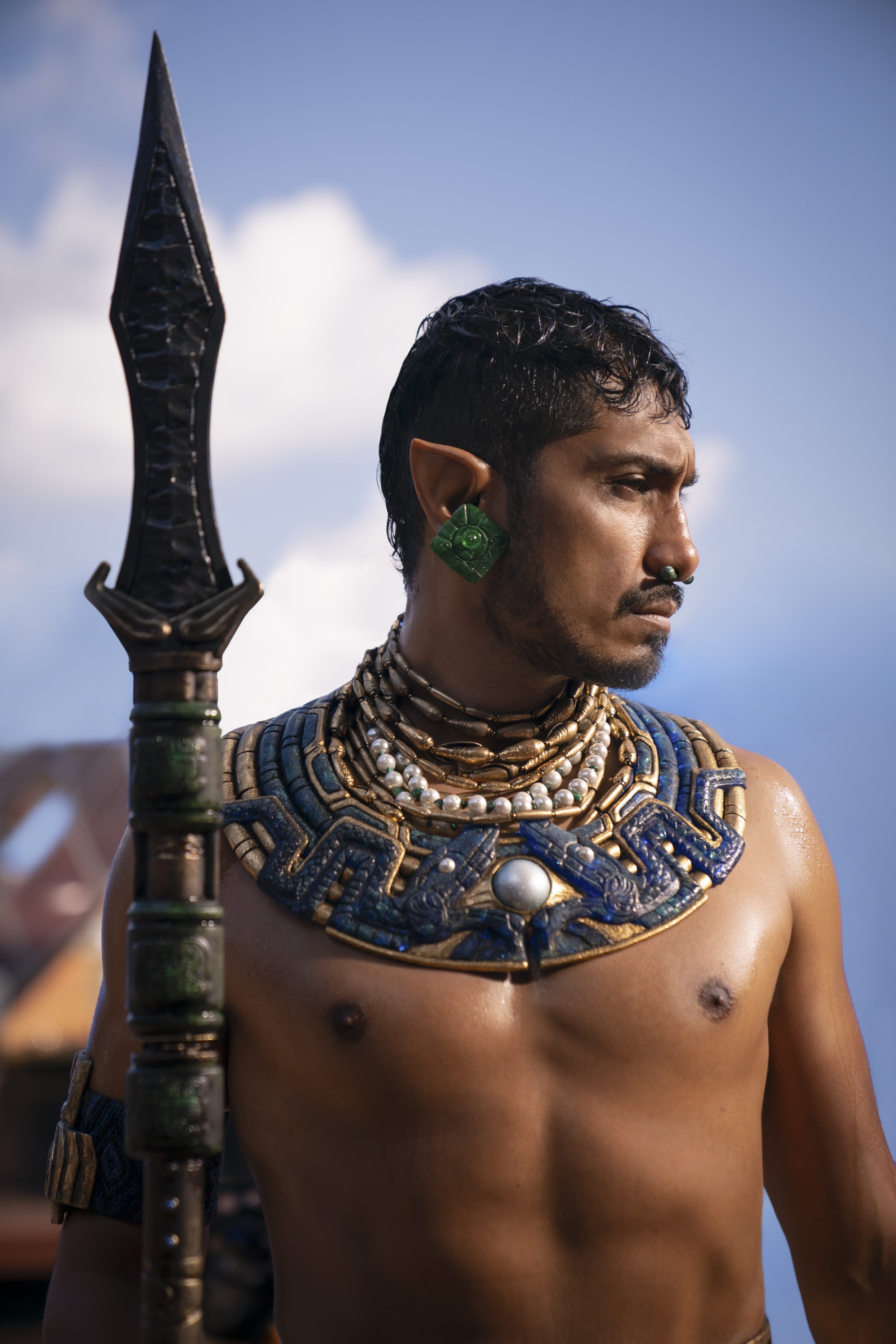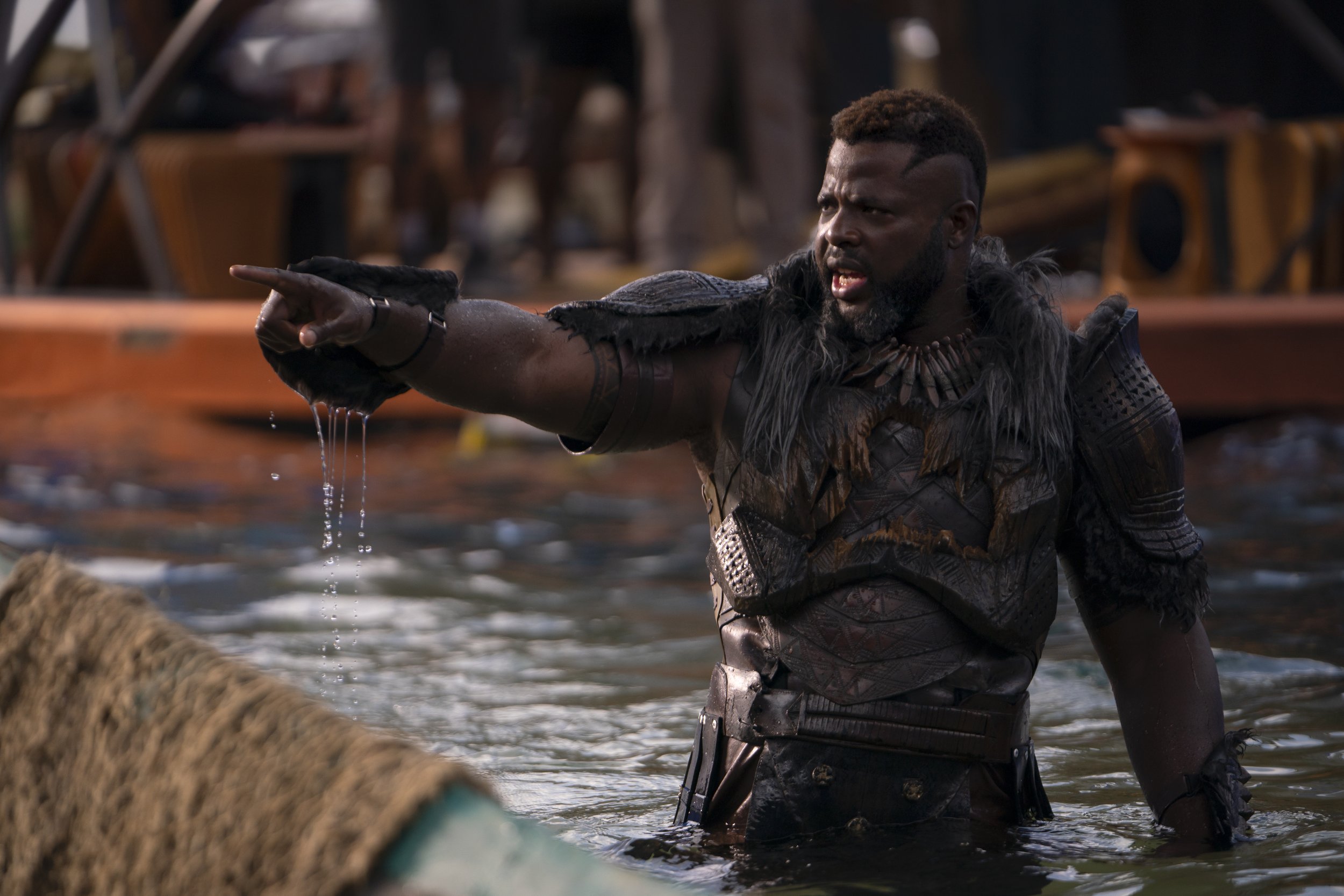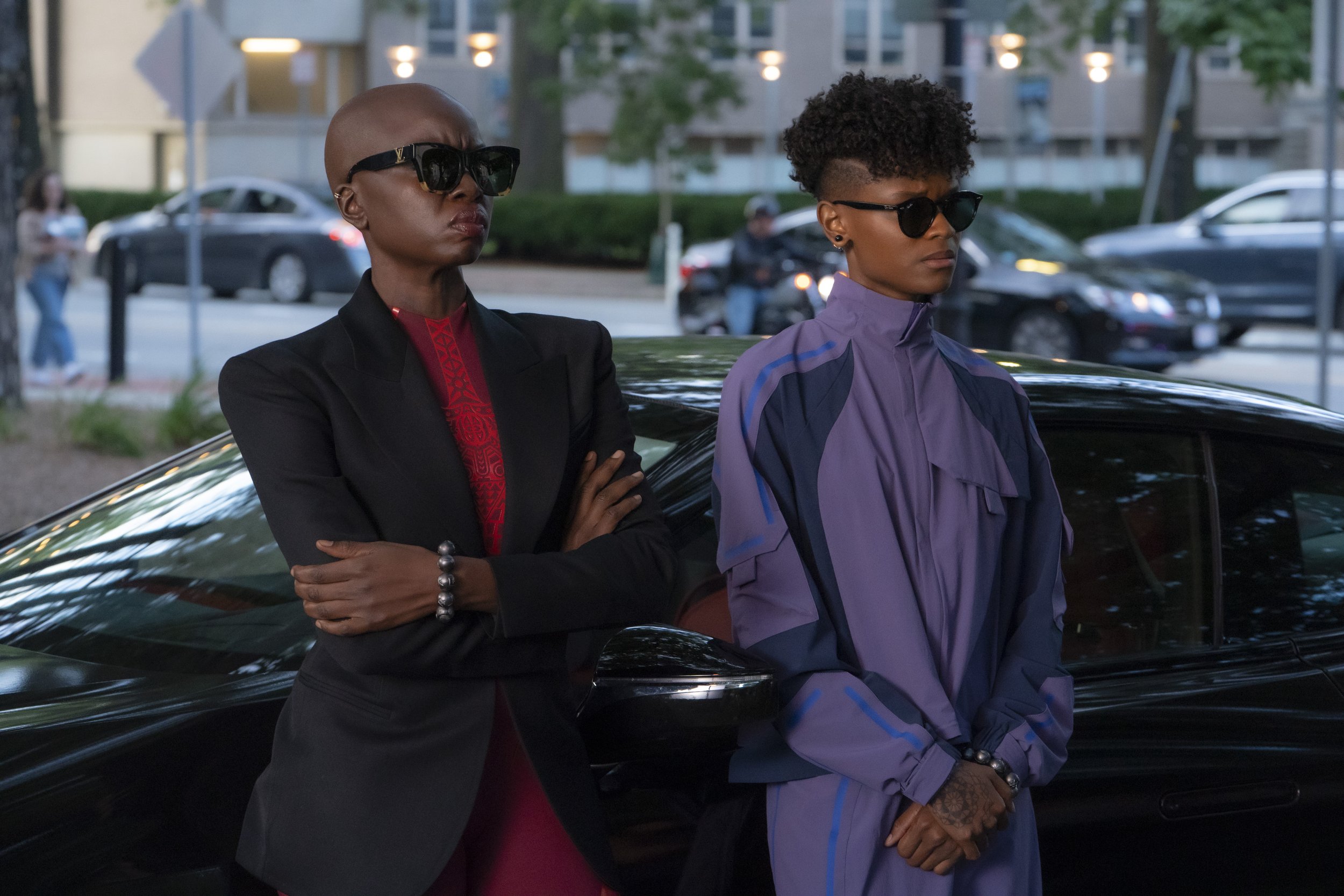MOVIE REVIEW: Black Panther: Wakanda Forever
BLACK PANTHER: WAKANDA FOREVER– 4 STARS
LESSON #1: THE SHOW MUST GO ON– There is undoubtedly a delicate situation created by Black Panther: Wakanda Forever continuing after the passing of Chadwick Boseman. The endeavor brings to mind the old 19th century circus and theater principle of “The show must go on.” Back then, if an accident (or worse) happened, ringmasters and stage leaders avoided panic. They lifted a sense of honor to not let their troupes or audiences down when no understudy was available. Marvel films already get likened to a circus enough, but the feeling and urgency matching that saying are very much present with Black Panther: Wakanda Forever.
The word from the expression that stands out is MUST. The braintrust of Marvel has long been intentional with their blueprints. Moving forward without one of their cornerstone stars was going to be no different. With great regard to the hopeful and mixed feelings of the #RecastTChalla movement, Marvel has chosen to definitely close a chapter and write new ones, beginning with this anxiously-awaited sequel from returning director Ryan Coogler.
In a frantic pre-credits sequence, King T’Challa (off-screen) has succumbed to an unknown disease. After many failed attempts, his brilliant sister Shuri (Leticia Wright) could not manufacture a synthetic alternative of the extinct and vibranium-infused heart-shaped herb that granted T’Challa his invulnerability to save his life. Joined by a public draped in honorable white, Shuri and T’Challa’s mother Ramonda (Oscar nominee Angela Bassett) lead the kingdom of Wakanda in ceremonies of celebration and mourning.
Elsewhere, the world’s tenuous and aggressive politics do not pause for the death of the king. T’Challa’s noble wish to share technology and resources with other nations has not been fulfilled since The Blip and the events of Avengers: Endgame. With the more protective Queen Ramonda now in power, that initiative has died with her son as she tightens borders and threatens reprisal in the United Nations to any international entity encroaching on her homeland with greed for vibranium.
When an American CIA project detects a chasm of vibranium– the first of its kind away from Africa– on the Atlantic Ocean floor using a newly invented machine, the discovery pings the attention of Wakanda and awakens a sleeping giant. Born from ancient myth and led by the powerful mutant king Namor (Tenoch Huerta Mejía of The Forever Purge), the underwater kingdom of Talokan has thrived for centuries away from surface affairs. This increase of invasive undersea operations threatens their secrecy and safety. Namor seeks to apprehend the machine’s inventor, MIT student Riri Williams (Dominique Thorne of Judas and the Black Messiah), to halt that progression.
LESSON #2: THE BURDEN OF LEADERSHIP– The collision of previously hidden kingdoms in Black Panther: Wakanda Forever creates a dangerous tipping point for the competing leaders, all desperate to defend their ways of life and sovereign people. Namor recognizes Wakanda’s dominant advantages over the rest of the continental nations. He offers a totalitarian alliance to conquer the surface world, one that would certainly bring the planet to its knees. Instead, with the clandestine help of Nakia (Oscar winner Lupita Nyong’o) and Dora Milaje general Okoye (Danai Gurira), Ramonda and Shuri decide to recruit and protect Riri Williams. This move provokes the wrath of Talokan at a time when Wakanda is without a Black Panther champion equal to the mighty Namor.
Black Panther: Wakanda Forever’s introduction of Namor– comics’ first anti-hero dating back to the Golden Age– to the Marvel Cinematic Universe is pure dream fulfillment. Embodied robustly by Tenoch Huerta Mejía, Namor is the most powerful earthbound adversary the MCU has ever presented, as well as one of the most stylistically vibrant. The Oscar-winning Black Panther team of costume designer Ruth E. Carter and production designer Hannah Beachler infused the character and his warriors with the rich accouterments of a newfangled Mesoamerican origin while continuing to expand the African palettes of the Wakandans waiting on the other side of the line in the sand. When the film calls for flexing muscles and clanging weapons, stunt coordinators Andy Gill (Black Panther) and Chris Denison (Avatar: The Way of Water) and marine coordinator Daniel F. Malone (No Time to Die) cannonball flailing armies by land, sea, and air into splashing and spectacular melee.
LESSON #3: FINDING COMFORT OR TORMENT FROM LOSS– Throughout all of this escalating crisis and impending showdown, the emotional stakes remain front and center in Black Panther: Wakanda Forever. The returning characters occupy places of peace or traps of anger in the wake of T’Challa’s death. The two performers expressing those emotions most often are Angela Bassett and Leticia Wright. The sheer conviction emanating from the senior What’s Love Got to Do With It Oscar nominee will rattle your ancestors. While Leticia Wright’s shoulders may not be wide as those of the man she replaces, she can support the physicality and new responsibilities. Where Shuri’s pendulum swings between wise solace and consuming vengeance is crucial.
Behind the surviving members of royalty is a willing-and-able ensemble stepping up to support the cause and help fill the top-lined void. Danai Gurira and Winston Duke, in particular, increased their already imposing gravitas as combative lieutenants to higher participation positions of courage and guidance. The portending middle act of character expansions, globetrotting, and geopolitical posturing in Black Panther: Wakanda Forever is thick and sluggish. You feel the film’s wearisome length of 161 minutes and Coogler’s herculean effort to bond it all together.
Tears flow freely in Black Panther: Wakanda Forever with the extended grief management session that has embodied the TV and film entries of the MCU’s Phase 4 more than the flashier multiverse shenanigans. Luckily, those convoluted excesses stay out of this movie, along with just about every outside possible hero or puppeteer, save for Martin Freeman’s Everett Ross and Julie Louis-Dreyfus’s Valentina Allegra de Fontaine absorbing more authority since The Falcon and the Winter Soldier.
Matching the film’s movements of accelerating for action and decelerating for reflection, composer Ludwig Göransson expands his Oscar-winning Black Panther score with wholly new incorporations of sounds. Never resting on his now-iconic themes from the first film, Göransson’s heavy range of electronica motifs and choral voices bend with this transitional period of emotions. His work hits the proper highs and lows. A dynamite pair of closing ballads from Rihanna, including the sure-fire future awards contender “Lift Me Up,” put a instrumental bow on this proverbial eulogy.
LESSON #4: HOW IS NEVER AS IMPORTANT AS WHY– Still, no matter how respectful Black Panther: Wakanda Forever is or is not, something will feel missing and forever be missing. The endearing attachments and forged connections to Chadwick Boseman are not easily abated or healed. The scar will always be there, but scars can define survivors and build character. When Namor drops the twin battlefield hammer lines of “bury your dead” and “mourn your losses,” that intrinsic ultimatum becomes firmly apparent and soundly invested by the film itself.
Viewers and fans will contemplate whether Black Panther: Wakanda Forever was the best Ryan Coogler and company could have done with their tragic circumstances. They will wonder if this pivot and royal escalation was the right approach. At some point, all of those questions (and others) have dual contexts between what they mean on-screen and off. Those questions also do not have a universal best, right, or perfect answer. For better or worse, we are now past “must” and the show emphatically goes on.
LOGO DESIGNED BY MEENTS ILLUSTRATED (#1077)


